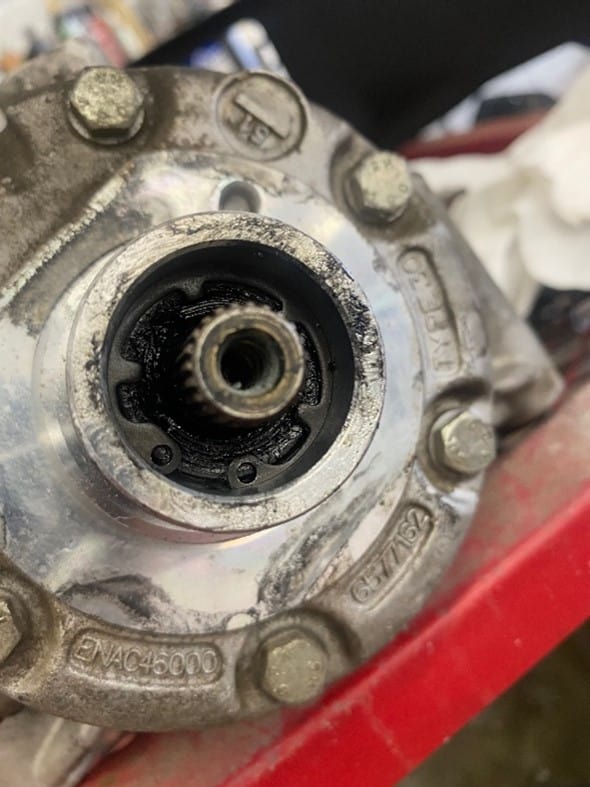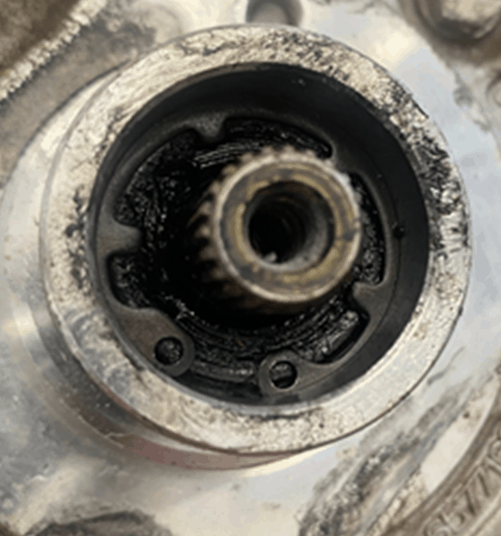Mysterious servicing issue in R-1234yf systems
By Ward Atkinson
Since R-1234yf is a flammable refrigerant, when servicing an R-1234yf system with SAE J 2843 service equipment the three-stage process is important to assure that the system does not have a refrigerant system leak. If the two-step automatic process is not passed, then the service equipment automatically shuts down not allowing charging the system.
Recently a 2017 R-1234yf Honda system, with 72,099 miles, encountering a loss of cooling (slow leak) over time would not pass the equipment charge procedure and the production amount could not be charged.
After several approaches, adding trace dye and various leak detection methods, including a 250-psig nitrogen holding charge there was no identifiable system leak.
The compressor was isolated from the system and the refrigerant charge process was done on the rest of the system and it passed the no leak test procedure.
Upon removal of the compressor pulley and clutch assemblies it was noted that the shaft seal area had evidence of oil leakage.
The compressor shaft seal (covered by the pulley drive assemblies and having a slow refrigerant system leak) was difficult to locate on the vehicle. Installing a new compressor resolved charging refrigerant into the system.

Compressor shaft seal with pulley removed courtesy of Virginia Auto Service, Phoenix, AZ 
From prior experience when vacuum is applied to some MVAC system components seals, such as lip seals, and flexible hose couplings, (with aging), tend to be pulled away from the sealing surface when in a vacuum and return when pressure is applied to the system. The result will be difficulty in finding small system refrigerant leaks.
MACS members share all types of helpful service and repair information, Join MACS now to be a part of this community.
Leave a Reply